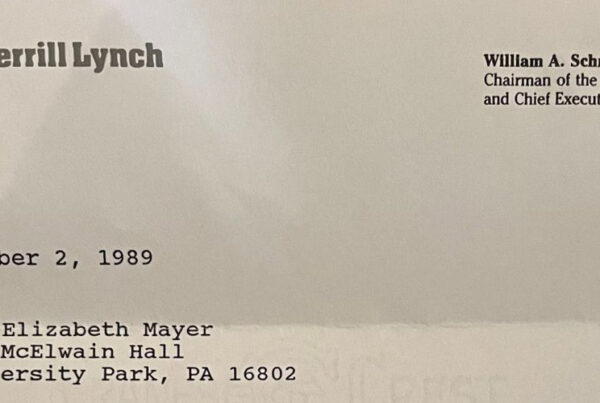
Last week, I posted a blog, “I am Honored to be a Washington Business Journal Guest Columnist for 2008.” A week later, my first article about the power of story, is now published. Woo hoo!
The initial announcement in the January 11th issue summarized the series nicely:
“The Business Smarts Section strives to offer readers top-shelf analysis and advice on entrepreneurship and workplace matters. We cannot do it alone. So for 2008 we are introducing a brand-new slated of Business Smarts columnists, all local experts… Taken together, these 12 columnists are akin to a pro-bono board of advisers for readers.”
During the course of 2008, the Washington Business Journal will be publishing about a dozen of my articles related to business storytelling, public speaking and presentations, building strong relationships, developing an engaging elevator pitch, better body language, storytelling for leaders, effective selling techniques, and data storytelling. I am honored and delighted to be one of the journalists. Thank you, Tim!
EVERYONE HAS A STORY TO TELL, AND YOU NEED ONE TOO
Copyright © 2008, Washington Business Journal. Used by permission.
Ira J. Koretsky
January 18, 2008
“So, what’s your story?” Four words that are simple to say and complex to answer. And the answer could change your life.
Even before humans had words, they had stories. Cave paintings gave way to more sophisticated forms of expression — plays, folk tales, poems, speeches and novels. We still appreciate some of the great stories created generations ago.
OK, so an explanation about your business or your great idea might not be studied in English literature classes 500 years from now. Today your story could be the talk of the town, get you the sale, get you the perfect job or cement an important relationship.
Stories Bind Relationships
Think about Monday morning at the office. What do you talk about? What you did over the weekend, of course. When you answer, that is a story. Helping someone fix his flat tire on the DC beltway is a story. Regaling colleagues about your vacation is a story. Talking about your favorite scene in a movie is a story. It is not necessarily what the story is about; the value is the interaction, and ultimately, how it is received.
Simply put, great stories travel. In business, people can leverage the power of stories every day. A great business story has the same characteristics and potential as personal stories. They transform facts into ideas and ideas into action, which can generate the recruiting, sales, and marketing results that you are seeking.
Great Stories Travel TM
Each of Us is a Business Storyteller
Even if you are not a natural storyteller, you can learn to combine your passion and your business message into a story that is entertaining, memorable, and compelling.
Your organization’s business story is power. Are you leveraging this power across all your communication materials?
You only have one chance to make a first and lasting impression. The $64,000 question is: Are your story tools getting prospects to say, “I need that!”
Over the course of my career, I have noticed one ubiquitous trait of people who are good at communicating details and facts. You need to both think and act like a storyteller – a business storyteller.
Telling your story in the right way can get you sustainable competitive advantage (SCA) in your marketplace. If you get the message across that you are the best, for instance, at managing government contracts or procuring research grants for arthritis research, then the story will endure and spread.
Appeal to Your Audience’s Emotions
Appealing to your audience’s emotions can go a long way in overcoming their perceived switching costs. Even if your product is superior, there will always be those who are cynical about moving from the status quo.
When organizing your story, do not just think about what you can do for their company’s bottom line. Explain how it will make them feel, what they will be able to do, and what others will think.
If you are making a presentation, you can help your audience and yourself by offering an active message in which you interpret the data, form a position and make recommendations. This way, your story will educate, entertain and inspire.
The route to effective storytelling starts well before the presentation. Determine your goals by incorporating “It’s all about them” analysis.
Knowing your audience means doing the research. Find out if there are any cultural barriers or taboo topics to avoid.
Another key to a powerful story is to have an attention-getting headline. Think about the nightly TV news or the morning paper. The news uses powerful visual and verbal images to draw you in so right away you know what the upcoming story is about — they whet your mental appetite and get you excited about the next story.
Your core message should take less than 30 seconds to say. Think of it as your advertisement. Consumer companies have learned through billions of dollars of advertising how to open our hearts, which in turn means opening our wallets.
You never know when you might be sitting across from the CEO of a company that would be key to meeting your sales goals or the hiring manager of the business where you dream of working. If you have 30 seconds, a firm handshake and a compelling story, your life can change. Great relationships begin with great stories. Opportunities abound to meet people. With a compelling story, they will want to call you back, set up a social meeting or set up a business appointment. This is how 30 seconds can turn into meaningful opportunities.
Over the coming months, I will be sharing with you articles that blend storytelling and observations about human behavior with proven sales and marketing techniques — techniques that help you become a more compelling business storyteller — techniques that help you build stronger and more profitable relationships.
The bottom line is the opportunity to tell your business story is a happening all around you. Are you maximizing the time you have?
FURTHER READING – ALL WASHINGTON BUSINESS JOURNAL ARTICLES
- Everyone has a Story to Tell, and You Need One Too (read) (this article)
- Say What you Want, Say it in Under 30 Seconds (read)
- Step Away from the Urn, and Other Networking Tips (read)
- Keeping it Real – Learn to Heed Your Authentic Voice (read)
- Getting to Yes – Make Body Language Work for You (read)
- Drop the Dry Presentation, Tell a Compelling Story (Part 1)
- Presenters Must Prepare Like Orchestra Conductors (Part 2)
- Great Leaders Know How to Put their Words to Work (read)
#chiefstoryteller #bettertomorrowmessage #storytelling #publicspeaking #presentation
Photography Source: DepositPhotos
Interested in improving (dramatically) your public speaking, presentation, storytelling, or data storytelling skills?



